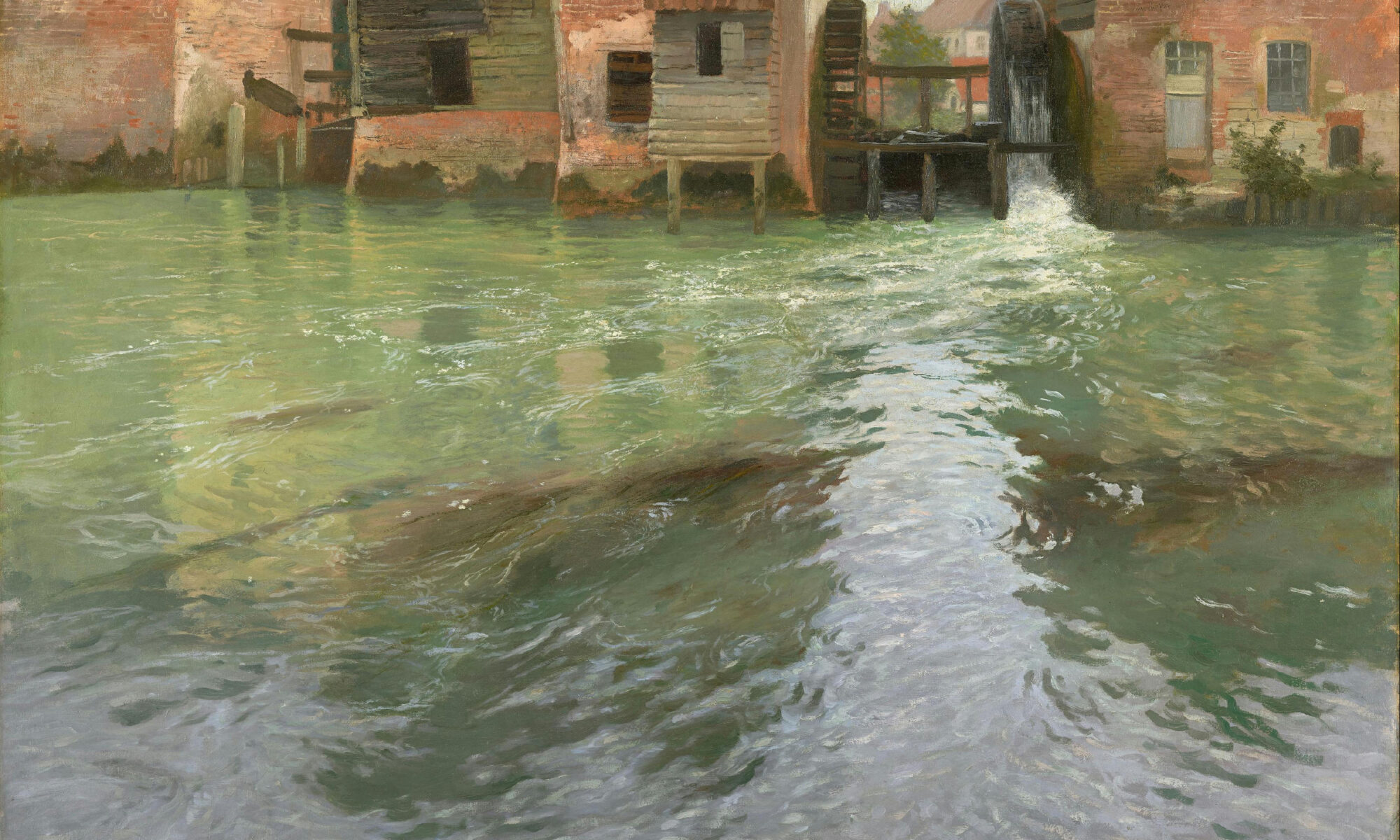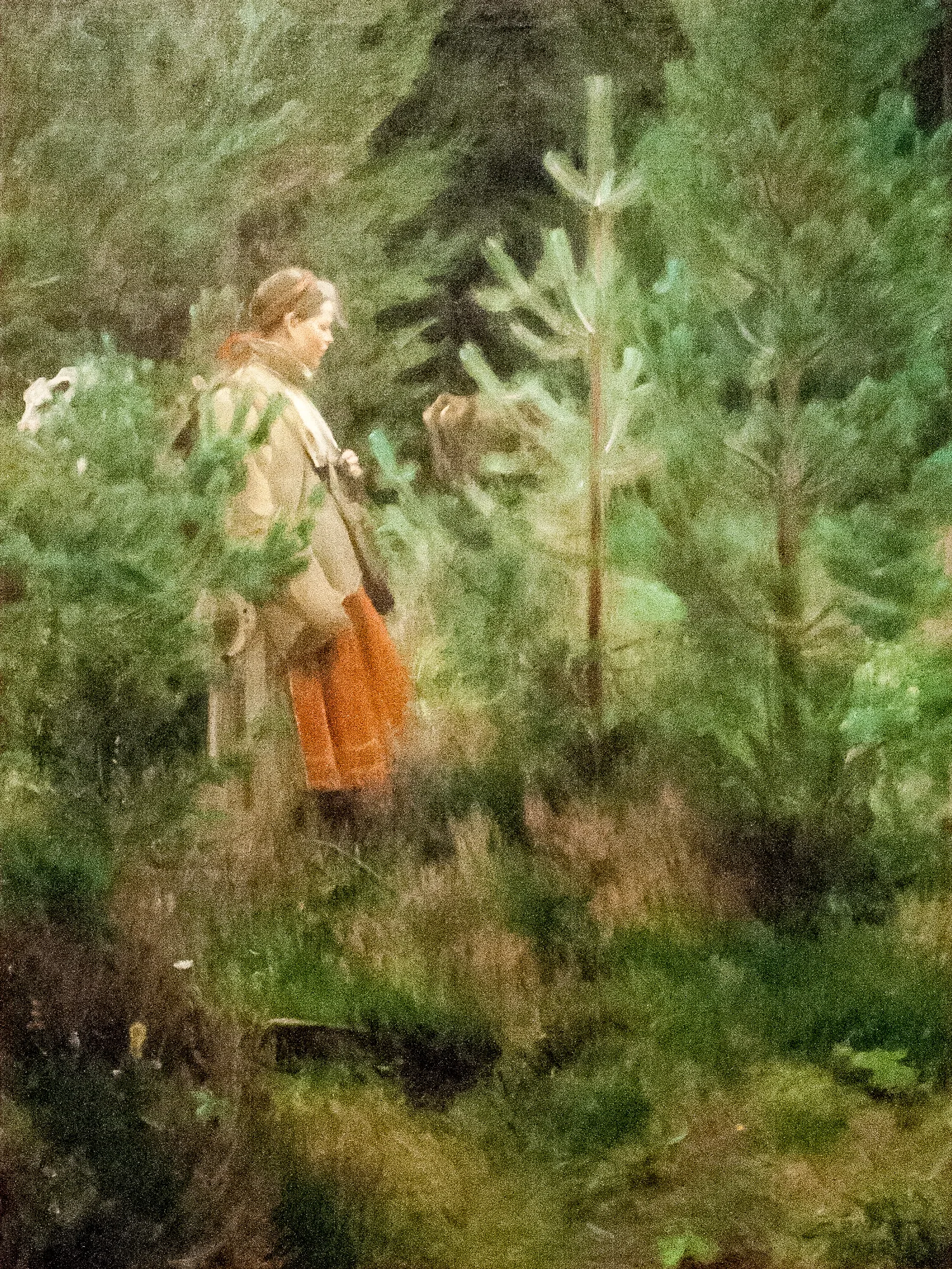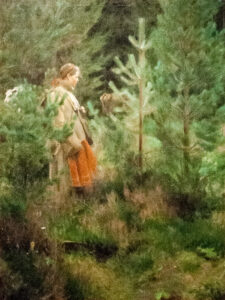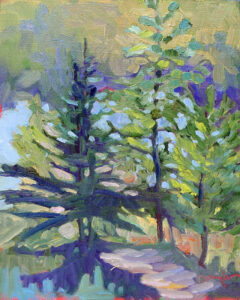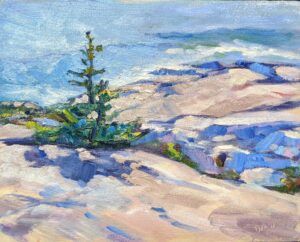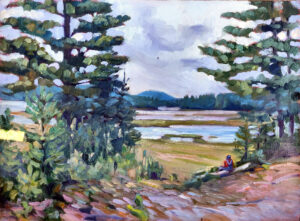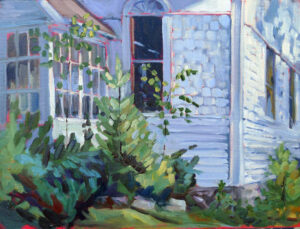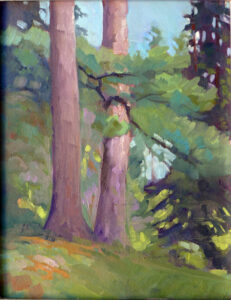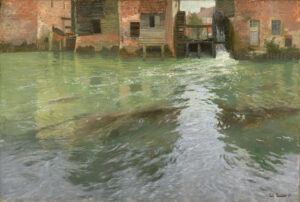
The most common question I hear is, ‘how do you paint water?’ The answer—if you’re smart—is, ‘how it looks at that moment.’ Water, like the sky, is infinitely variable. Yes, there are some fundamental truths, such as that reflections are symmetrical across a horizontal axis, or that water will reflect the sky color. But other than that, all bets are off. I’ve heard artists say, with authority, that the sea is always lightest at the horizon, or that the chroma is lower than the sky.
Those things are usually, but not always, true. The sea is bigger than you or me; it does whatever it wants. If you want a more scientific explanation, moving water is a massive, constantly-changing, fractal-featured mirror. It doesn’t stay the same for a minute, let alone over time.
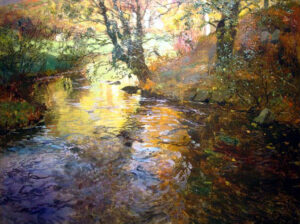
That complicates painting from photos, because the surface usually changes faster than the human eye can perceive. The long ellipses or droplets in space captured in a still photograph are not what we ‘see’. My friend Brad Marshall experimented recently with painting a waterfall using a continuous loop video instead of a still photo. I haven’t tried it yet, but it’s on my to-do list.
Frits Thaulow was a Norwegian landscape painter, roughly contemporary to that brilliant trio of Anders Zorn, John Singer Sargent and Joaquín Sorolla. In that company, Thaulow might have faded into obscurity except for his ability to paint roiling river surfaces. Typically, he laid down the bones of the reflections in very thin paint, and then scumbled the traceries of water over the top. That was frequently in a neutral tone, because he was painting in far northern Europe where the skies were often grey.
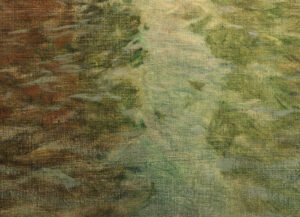
Roiling water was Thaulow’s particular talent. Beside it, his buildings seem sketched in as an afterthought. It would be easy to dismiss him as a one-shot wonder, someone who figured out a cool effect and then repeated it until he was a caricature of himself. But it was more likely an obsession.
I say that because Thaulow also got excellent water effects in watercolor, where the brush technique is entirely different. That, by the way, is something he had in common with Zorn, Sargent, and Sorolla, all of whom handled watercolor with equal facility to their more famous oils.
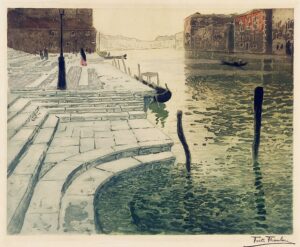
I once painted something for a plein air event that I longed to call Everything but the Kitchen Sink, because I literally threw in every cliché about the area that I could think of. Having already started down the road to hell, I brushed in the vertical reflections and then I overbrushed them horizontally with a large, dry brush. This is something you might learn at a sip-and-paint as ‘how to paint water’, but it seemed appropriate for that absolutely still water.
Naturally, it sold.
I was being fanciful and farcical, but learning one ‘way to paint water’ and then grinding it to death is not a technique I recommend. Brilliance lies not in sleight of hand but in observation. Worry less about your brushwork and more about what’s in front of you. If you learn to see, your hand will naturally follow your eye.

